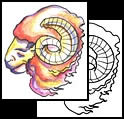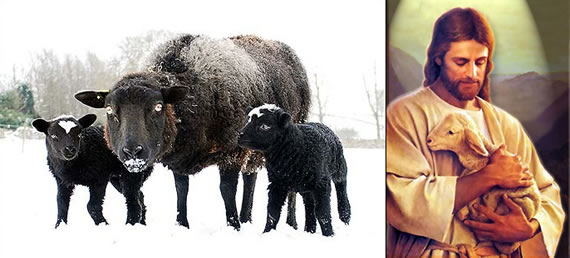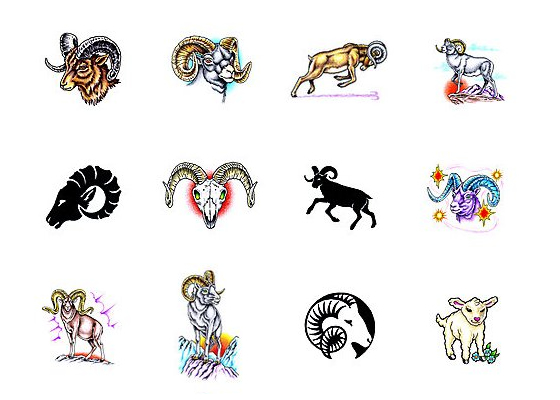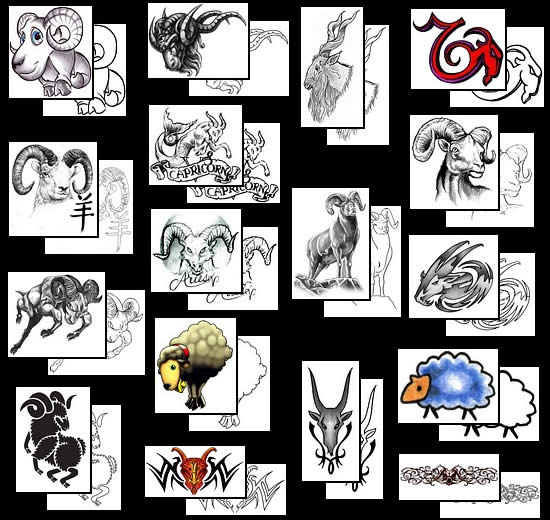|
|
|||
 |
|||
|
TATTOO DESIGNS & SYMBOLS - RAM TATTOOS
Tattoo Symbol Index - A B C D E F G H I J K L M N O P Q R S T U V W X Y Z Tattoo designs - R >> Ram Tattoos
Various gods of Egypt, Greece, Rome and the Middle East adopted the ram as their divine symbol. The ram with the 'Golden Fleece' was that fabulous beast owned by Hermes and sent in sacrifice to the sky god, Zeus. Its fleece became the symbol of heroic quests. In Egypt, the ram was a sacred temple animal admired for its virility and warlike attributes. The Egyptian Sun god, Osiris, is rendered with ram's horns that sweep back in two great spirals symbolizing primal creativity, solar power, fire and potency. In Indian mythology, the ram is the god of wealth. As a totem animal, the ram and its great horns (that never stop growing) suggest powerful mental activity, curiosity and imagination. It is important for those guided by this animal spirit to keep their minds stimulated in order to optimize their mental potential. The aboriginal people in some regions of the Yangtse River valley in China still wear totemic head ornaments depicting the sheep.
In myth and folklore, the ram and goat were often interchangeable. The Norse god, Thor, had two rams or goats pulling his chariot. But it is the powerful horns of the ram that inspired the 'battering ram' used to knock down the doors of the enemy. The horns were seen as a status symbol implying wealth and victory in battle. In ancient Persian mythology, the god of war and victory manifested as ten different animals, the ram being one of them. It was an important cult animal for the Celts and their god, Cernunnos, who favoured the ram-headed serpent as a symbol of renewal. The idea of the ram and the image of two male rams smashing their heads together repeatedly for supremacy of a flock of female ewes permeates our language to this day. A dictionary listing of definitions of 'ram' leaves little doubt to the pervasiveness of the ram in our conscious and subconscious minds;
In the Old Testament, the ram is depicted as an important emblem of surrender and sacrifice. In the story of Abraham and Isaac, Abraham passes God's test of obedience, is then spared his son, and sacrifices the ram which had appeared caught by its horns in a bush. It was a Hebrew battle emblem and symbol of leadership. Priests blew the ram's horn at the start of battle "to make victory magic". The prophet, Elijah, blew the ram's horn to announce the coming of the Messiah. At the base of the Jewish Menorah is often found a carving of the ram's horn, a traditional symbol of hope and strength.
Later, the ram became a Christian symbol of leadership, and an emblem of Christ as protector of his flock. Through the ages, the ram as a symbol of power and male potency clashed with religious moral principles, earning it an association with lusting sinners and the need to overcome moral weakness and decadence. The ram among a flock of sheep was eventually perceived as a pastoral creature. Next to the ram - an uncastrated male - the sheep was a symbol of meekness, easily led and in need of a protector. The Good Shepherd was another attribute of Christ, and the words, 'Feed my lambs, feed my sheep,' was Christ's instruction to the disciple, Peter, as head of the Church.
He saith unto him the third time, Simon, son of Jonas, lovest thou
me? Peter was grieved because he said unto him the third time,
Lovest thou me? And he said unto him, Lord, thou knowest all things;
thou knowest that I love thee. Jesus saith unto him, Feed my sheep. In Christian art, the sheep is often depicted as a mild and innocent creature, sometimes as sacrificial martyr, or in the company of saints. 'Lost sheep' and 'black sheep' were terms that described the sinner and the unrepentant. In old folklore, the sheep was often a symbol of dimwittedness, and pertained to one who lacked the ability to take responsibility for their own life.
Get inspired by some really great images and photos in our Ram / Sheep Inspiration Gallery See also: Capricorn, Year of the Sheep Zodiac, Aries, Goat, Animal Tattoo Index
Choose your own ram tattoo design from Tattoo-Art.com. Pick out your Ram / Sheep tattoo design from Tattoo Johnny Tattoo designs - R >> Ram Tattoos Tattoo Symbol Index - A B C D E F G H I J K L M N O P Q R S T U V W X Y Z |
||
| Celeb Tattoos | Facts & Stats | Designs & Symbols | History | Culture | Links | Tattoo Galleries | Contact | |||
|
|
|||









